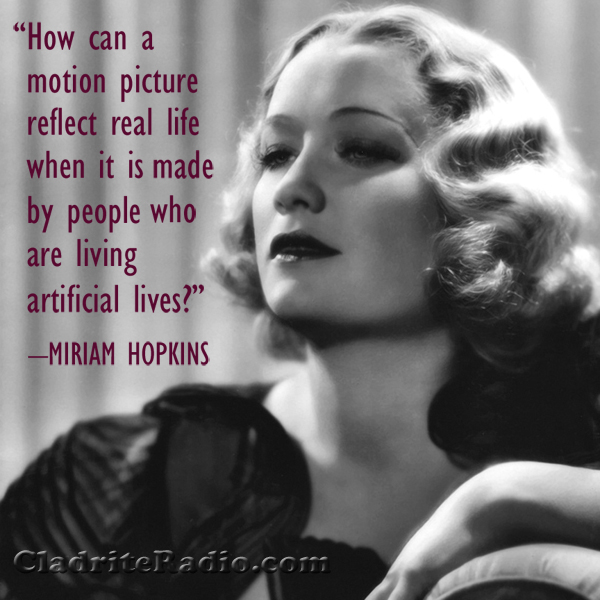Ask the average man or woman on the street about Miriam Hopkins, who was born 113 years ago today in Savannah, Georgia, and you’ll likely receive a blank stare. But movie buffs well recall her many standout performances.
Hopkins had what TCM.com has described as “an intriguing, husky voice and a brittle, sometimes twitchy yet sexy style.” And like Bette Davis, with whom she was reputed to have had a long-running feud, she was as much a character off the screen as on it.
Hopkins frequently returned to the stage, where her career had begun, when things slowed down for her in Hollywood, and in 1933, she originated the lead role of Julie in Jezebel on Broadway. The play didn’t do particularly well, but when Warner Brothers sought the rights to the play, of which Hopkins was part-owner, for a film adaptation, Hopkins demanded she be cast as Julie before she would agree to the deal. After receiving assurances that she would, in fact, portray Julie in the film, Hopkins signed off the deal, only to see Davis be given the role instead. And worse, Davis went on to win an Oscar, her second, for her work in the film. That didn’t set well with Hopkins.
In 1938, Hopkins and Davis were paired in a film, The Old Maid (1939, based on an Edith Wharton story), and on the first day of shooting, Hopkins got Davis’s goat by showing up in a dress that was a duplicate of one Davis had worn in Jezebel.
Davis wrote of Hopkins’ work in The Old Maid, “Miriam used and, I must give her credit, knew every trick in the book. I became fascinated watching them appear one by one…When she was supposed to be listening to me, her eyes would wander off into some other world in which she was the sweetest of them all. Her restless little spirit was impatiently awaiting her next line, her golden curls quivering with expectancy.”
Among the memorable pictures that stand out in Hopkins’ career are some true classics: The Smiling Lieutenant (1931), Design for Living (1933) and Trouble in Paradise (1932) for director Ernst Lubitsch, Rouben Mamoulian’s Dr. Jekyll and Mr. Hyde (1931), and a picture that is considered among the most memorable of pre-codes, The Story of Temple Drake. She also starred in Becky Sharp (1935), the first three-strip Technicolor feature.
Happy birthday, Ms. Hopkins, wherever you may be!


